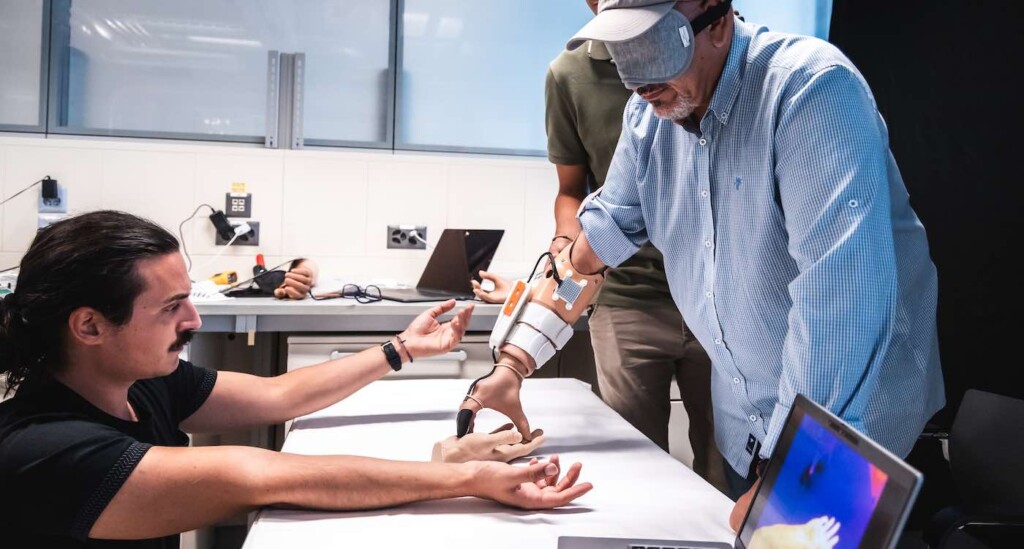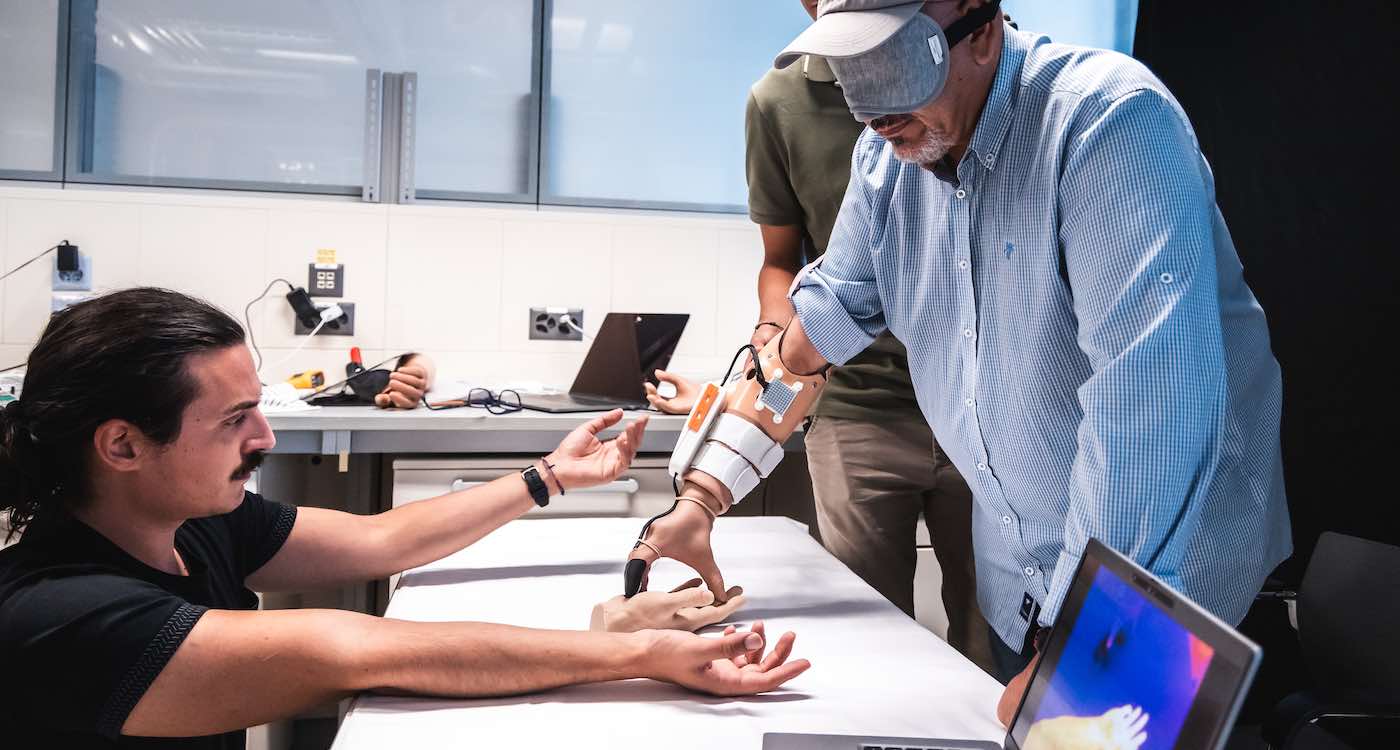
The first-ever prosthetic limb that allows the wearer to sense temperature and feel the warmth of another person has been created.
The MiniTouch device allows amputees to perceive and respond to temperature, an ability that developers hope will improve their human connections.
It works by transmitting thermal information from the fingertip of the prosthetic hand to the wearer’s residual arm.
Using the device, a man in Italy who’s been an amputee for three decades was able to differentiate between hot and cold objects with 100 percent accuracy.
The scientists in Italy and Switzerland hope it could soon restore a full range of sensations through prosthetics.
The MiniTouch prosthetic hand provided realistic and real-time thermal sensory feedback to a 57-year-old man from Pistoia—the first amputee to try the device.
Fabrizio was overcome with emotions after feeling the warmth of another person again, 37 years after his hand was amputated from the wrist.
“It was a very strong emotion for me. It was like reactivating a connection with someone.”
Using the MiniTouch, Fabrizio was able to discriminate between, and manually sort, objects of different temperatures or materials. (See the video below from Reuters…)
“When one of the researchers placed the sensor on his own body, I could feel the warmth of another person with my phantom hand,” said Fabrizio.
The team says the new technology, presented in a study published in the journal Med, marks the first time natural temperature sensations have been incorporated into a functional artificial limb—one of the last frontiers for restoring sensation to robotic hands.
CHECK OUT: Researchers Unveil Ultra-Precise, Mind-Controlled Prosthetic: ‘It’s like you have a hand again’
“For the first time, we’re really close to restoring the full palette of sensations to amputees,” reported Professor Silvestro Micera, a joint senior author of the study from the Sant’Anna School of Advanced Studies. “And it can be easily integrated into commercial prostheses.”
The MiniTouch uses off-the-shelf electronics integrated into commercially available prosthetic limbs and does not require any surgery. Rather, the device is attached to a point on the wearer’s same limb, producing sensations in their phantom index finger.
Clinical tests in Bologna, Italy at the Inail Prosthesis Centre in Vigorso di Budriothe, showed that Fabrizio was able to perfectly distinguish between three similar bottles containing cold (12°C), cool (24°C), or hot (40°C) water with total accuracy. The device improved Fabrizio’s ability to quickly classify metal cubes of differing temperatures.
“When you reach a certain level of dexterity with robotic hands, you really need to have sensory feedback to be able to use it to its full potential,” said Dr. Solaiman Shokur, co-author from the École Polytechnique Fédérale de Lausanne (EPFL) in Switzerland.
“We think having the ability to sense temperature will improve amputees’ embodiment—the feeling that ‘this hand is mine’.”
DREAM MAKERS: Student Can Pursue Her Dreams of Being a Cellist After Teens Build Her a Specialized Prosthetic
EPFL’s Jonathan Muheim, another study co-author, believes that thermal sensations in neuro-prosthetics has been neglected, even though there’s increasing evidence of their importance in our everyday life.
The next step for MiniTouch is to integrate thermal information from multiple points of an amputee’s limb, instead of just the index finger. For example, enabling some sensation in the back of the hand which allowing amputees to sense when another person touches their hand.
Their long term goal is to develop a multimodal system integrating touch, perception, and temperature that would be able to tell the user ‘this is soft and hot’, or ‘this is hard and cold’. Prof. Micera concludes it’s all to offer a “richer and more natural perception of the tactile world.”
WATCH the MiniTouch video below from Reuters….
SHARE THE GOOD NEWS With Ability Groups on Social Media…




















